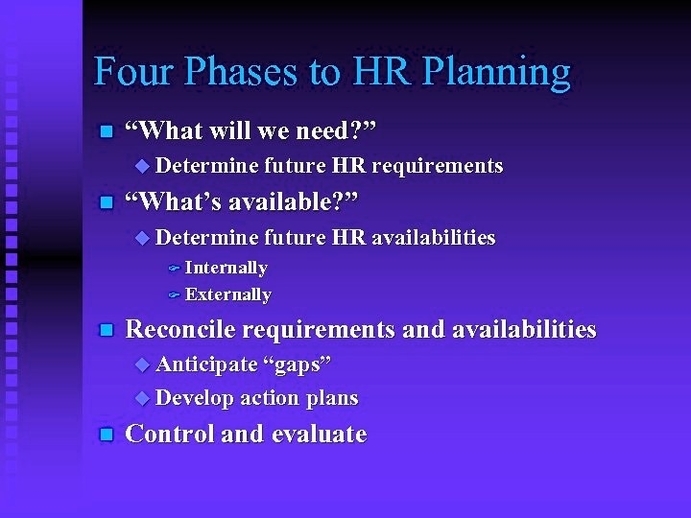
Human Resource Planning (HRP) is a continuous process of systematic planning to achieve optimum use of an organization’s most valuable assetquality employees. It ensures the best fit between employees and jobs while avoiding manpower shortages or surpluses. The process involves four key steps: analyzing present labor supply, forecasting labor demand, balancing projected labor demand with supply, and supporting organizational goals .
The first phase of HRP is Situation Analysis, Environmental Scanning and Strategic Planning. This phase involves analyzing the current situation of the organization, identifying the external and internal factors that affect the organization, and developing a strategic plan to address the identified issues. The strategic plan should align with the organization’s mission, vision, and values .
The second phase of HRP is Forecasting Human Resource Demands. This phase involves forecasting the future human resource needs of the organization based on the strategic plan developed in the first phase. The forecasting process should consider the organization’s growth rate, technological advancements, and other factors that may affect the organization’s human resource needs .
The third phase of HRP is Human Resource Supply Forecasting. This phase involves forecasting the future supply of human resources based on the organization’s current workforce, turnover rate, and other factors that may affect the organization’s human resource supply. The forecasting process should consider the organization’s recruitment and selection policies, training and development programs, and other factors that may affect the organization’s human resource supply .
The fourth and final phase of HRP is Action Decision. This phase involves developing and implementing action plans to address the gaps identified in the previous phases. The action plans should be aligned with the organization’s strategic plan and should support the organization’s goals. The action plans may involve recruitment and selection, training and development, performance management, and other human resource management activities .
In conclusion, Human Resource Planning is a critical process for any organization that wants to maintain a steady stream of skilled employees while avoiding employee shortages or surpluses. The four phases of HRP are Situation Analysis, Environmental Scanning and Strategic Planning, Forecasting Human Resource Demands, Human Resource Supply Forecasting, and Action Decision. By following these phases, organizations can ensure that they have the right people in the right jobs at the right time, which can lead to increased productivity and profitability .
